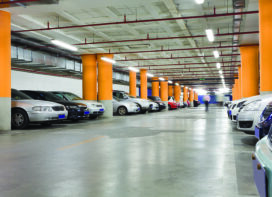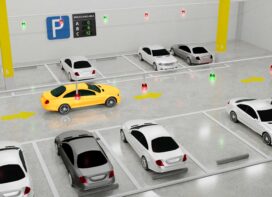
Dierk Grunzig, Expert – Parking & Mobility, CAP Consulting, Berlin
In the past, Parking was a silo-business, limited to the purpose of temporary storage of a vehicle. Over the time, parking is developing to a part of the mobility-chain. Dierk Grunzig, Expert – Parking & Mobility, CAP Consulting, Berlin, writes about the goals and challenges in the management of parking.
A businessman wants to travel from A to B but wants to use the travel-time to work on his presentation. Therefore, he decides to use the train and drive to the railway-station. Using an app, he books his parking-spot from home, and payment for parking via the same app. Driving guidance is given by this app to easily find the entrance of the parking-area. Arriving at the parking-gate, his license-plate is recognized automatically, and the barrier opens without forcing the driver to stop or pick up a parking-ticket: Parking is a Service. The parking-operator is using Dynamic Pricing. Dependent on where the vehicle is parked (near the entrance or elevator, or far away on top-level), the pricing is different. Days with rainy weather and an event nearby show higher parking-fees, than days with perfect weather and closed shops around. The used app tells the business-man the available options and he chooses the spot e most convenient to him.
Continuing his travel by train and returning two days later, he picks up his car directly from the parking-area. No ticket to search in the pockets, no payment on site, no queuing at a pay-machine.
After leaving the railway-station and on his way to the company’s office, he visits a customer. Valet-parking is offered here. After authentication via the license-plate and using his email-address, he leaves the car keys with service-attendant. On demand, the Parking-app gives information to the car-owner; is the vehicle still driving or already parked.
At the end of the meeting, the car-owner pushes the “bring-back key” on his app and his car is brought back in time and waits in front of the building. Photographs from the car, taken before leaving and after bringing back are shown that no scratches or accidents happened. The payment is done via the app.
His travel is multimodal, and Parking as a Service is the last a part of this chain.

What are the goals of PaaS?
For the operator a parking-area is an asset with finite capacity, an open opportunity to exert time and capacity management, which he wants to monetize.
It is about
- reducing cost of operation
- increase conveniency of the customer
- increase payment rate
- linking any parking-process to a payment-process.
For the driver it is about how a parking is used, who can use it and when, how it can help the driver to reach his real destination (the parking area or the mobility-hub is only an intermediate place to stop).
It is about
- increased convenience
- easy authentication and payment with a clear and easy to use history
For the city, the parking-area is an asset
- to manage congestion (if the enforcement is organized well)
- as a source of income
- to stay attractive
Often, PaaS is combined with the concept of Mobility-Hubs. The driver does not have to care about what kind of transportation he is deciding to use: a bike, an e-car, public transport, a shared car. In all cases, can he just enter the area, leaving his car for parking and changing onto another mode of mobility? Behind the whole process is the same management-system for authentication, booking guidance and payment.

What is the technology behind?
Well, the main challenge is the integration of Parking as a Service into the whole mobility-chain.
Digitalization is one of the key elements, starting with using the same credentials for all steps. The authentication at the parking area is done via license-plate recognition; then linked to the reservation and later to the payment.
That makes the management-platform the core part of the system! Here, the driver is registered, or his user-data as unknown is managed. His credentials are safely stored and most important, here are the interfaces to connected services.
Any parking-process is digitalized from the first step, the booking, to the last, the entry to the area. This also helps to prevent fraud on local level.
To make a system successful, it needs to be convenient, easy to use, and be able to cover the exceptions out of the normal process: like a car without license-plate, a non-working RFC-tag, or the time-out of credit-card.
The challenge is the automated identification of two-wheeler, three-wheeler or four-wheeler, with or without license-plate, which is a condition to digitize the process correctly.
 TrafficInfraTech Magazine Linking People Places & Progress
TrafficInfraTech Magazine Linking People Places & Progress


